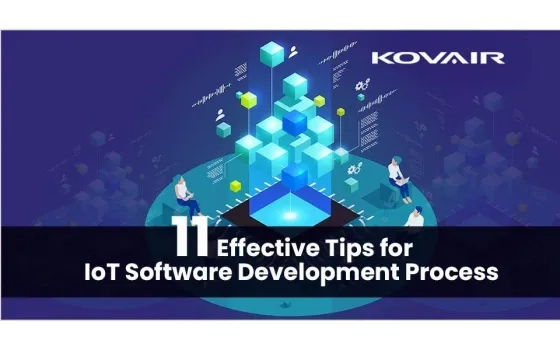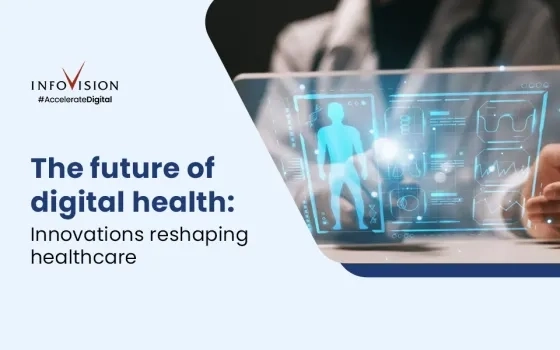IoT is expanding its reach every day to everything from smart wearable devices to smart home devices, from smart vehicles to smart cities. Every tech company is ready to leverage the advancement of IoT projects. The capabilities of IoT can put life into dead objects by connecting them over a network and hatch it in real-time to enhance the usability of things and ease the process of securing critical data.
IoT development strengthens every sector enabling the intelligent processing of insightful data in no time. But the development of IoT products welcomes various challenges that developers must be aware of before embarking on a journey of making an impactful product.
Companies may be wasting R&D expenditures on a project that will fail without a defined use case and plan for the obtained data. IoT initiatives also face the same issues due to new technologies, compliance, cybersecurity, and user acceptance.
Let’s explore the essential components for developing IoT applications
We are set to witness significant use cases and the growth of IoT in the future. Although, the development process of IoT software/applications is more complex than any other traditional way of building an application. The success of IoT software for the whole organization calls for contribution by various departments like technology, operational and higher management.
As per a survey by Cisco, 60% of IoT software development companies and technology implementation projects either failed or are on hold. Poor planning, lack of communication among functional units, and legitimate answers.
The primary process of connecting all the significant elements to optimize the usage of IoT devices includes sensors, tags, embedded coding, and actuators to communicate with objects. IoT devices are varied as per industrial usage and everyday life usage.
Guide to better IoT software development
Despite successfully connecting all the components and effective communication across departments, ponder on the following points to assure the success of IoT software development.
1. Determine the problem statement
Once you decide to build an IoT app, you must be clear in your thoughts about where precisely the problem resides. Many businesses push the development process right away by setting up goals without characterizing the statement of the issue.
Although it is the initial step in creating any product or application, it is one of the most crucial things in developing IoT applications.
All decision-makers in the business should make precise statements about the problem with facts and figures and all critical success measures to be taken to eliminate the problem.
2. Set objectives
It is important to set goals before initiating a significant process of any technology transformation because it’s not just to follow the steps in the process.
You need to conduct appropriate planning and research to meet attainable goals and persuade the cross-functional team to work towards a common goal, enabling the development team to progress in the same direction while delivering high-quality products.
Well-thought-out plans unlock the aptness of issues in the technology sector. Building something that is not relevant to your business, isn’t trendy in the industry, or has a tiny target audience might waste both time and money.
You can also conduct extensive market research that can provide detailed studies regarding the solutions to problems stated before setting goals.
3. Examine the outcomes
Defining the opportunities offered by developing an IoT software is equally important after determining the development objective. IoTs have many benefits, but defining the scope will enlighten you on where the project is going and the outcomes you can expect at later stages.
As a result, before you begin the project, make sure you have all of your objectives in place and a plan for where you want the project to be after a certain amount of time.
4. Outline the structure
A roadmap provides a comprehensive picture of the project, including a schedule and planned progress over time. This will also assist you in keeping track of the list of potential risks and building risk mitigation strategies and plans.
5. Mode of communication
One of the objectives of creating IoT software is to enable automation by setting productive communication between network and object. So, consider the device’s characteristics and choose a mode of communication accordingly, ensuring full support to the network.
You must evaluate factors of networks as well like signal strength, latency, bandwidth, and all security-related aspects of the medium while selecting the mode of communication.
6. User experience
If the application cannot provide a great user experience, all goes in vain. It is one of the essential points to consider while deploying an IoT application into a system.
After selecting the mode of communication, the IoT app developer should verify that the app has been built according to the users’ requirements. Users can be anyone – end-customers, employees, or management.
During deployment, ensure that the app’s functionality is understandable by the user and the navigation of the whole technology from network to object is simple and seamless for a remarkable experience.
7. Hardware security check
Hardware security is just as important as software security. The quality of the software is directly related to the safety of the hardware. Said, a lack of adequate hardware security might hurt the quality of your program.
To avoid dangerous scenarios, enable the use of firewalls, anti-malware, and a fail-safe tool to protect your system against any hardware or software failure. To protect your IoT program from threats, include security features like tamper detection or a math accelerator.
8. Coordination between S/W and H/W
The emergence of new technologies plays a vital role in developing IoT applications. Technology is the only constant in the digital transformation, so keep track of the changing trends in software and hardware technologies involved in the development process.
Coordination between software and hardware must be streamlined and effective. Recognize the hardware elements, gear, tools, and equipment to start building a successful IoT application.
9. Check out IoT solutions with use cases
To obtain an effective IoT solution, one must put it together following well-defined use cases. A well-defined use case is based on three factors: its capacity to increase adoption and income, reduce costs, and the ability to solve a problem. The right strategy and technology selection can address the IoT application’s use cases.
10. Profound speed and scalability
The foundation of developing IoT applications is getting real-time information from objects. Still, as we know, technology evolves when problems knock at the door, and to identify them, you need real-time solutions.
Checking your IoT application’s scalability and speed to connect with other devices is also a process of developing an existing system; otherwise, it may become obsolete as data quantities grow from many sources and devices.
11. Choose the best IoT development platform
Choose the most suitable IoT development platform that meets your needs. The ROI of your IoT project and results after measuring the performance of the KPIs all depend on how effective your development platform is.
Here are a few questions to consider before deciding –
- What is the track record of the potential development platform you’ve chosen?
- How effective were the past deployments?
- How trustworthy is it?
- Is it easy to scale and provide global connectivity in the future?
Final words
The rise of IoT signals a bright future for the sector. Projects do, however, occasionally fail due to insufficient process monitoring and failure to keep up with trends.
To make your IoT application a success, define objectives while also providing the project with the security it requires. Additionally, keep an eye on market trends and customer expectations as your program develops.
Source: 11 Effective Tips for IoT Software Development Process




















